To install a baby gate on stairs, measure the width of the stairwell and choose a gate that fits, position it at the desired height, and secure it tightly using the provided hardware. When it comes to ensuring the safety of your little ones, installing a baby gate on stairs is crucial.
Stairs pose a potential hazard, and a properly installed gate can prevent accidents. A baby gate creates a physical barrier, restricting access to the stairs. However, it is essential to follow the correct installation process to ensure its effectiveness. This article will guide you through the steps of installing a baby gate on stairs, ensuring a secure and safe environment for your child.
By measuring the width of the stairwell, choosing the right gate, positioning it correctly, and securing it firmly, you can provide an added layer of protection for your little one.
Understanding The Importance Of Baby Gate Installation
When it comes to the safety of our little ones, there is no room for compromise. One area of the house that requires extra attention is the stairs. From curious crawlers to adventurous toddlers, stairs can pose a significant risk. That’s where baby gates come in! Installing a baby gate on stairs is a proactive measure to prevent accidents and provide peace of mind for parents.
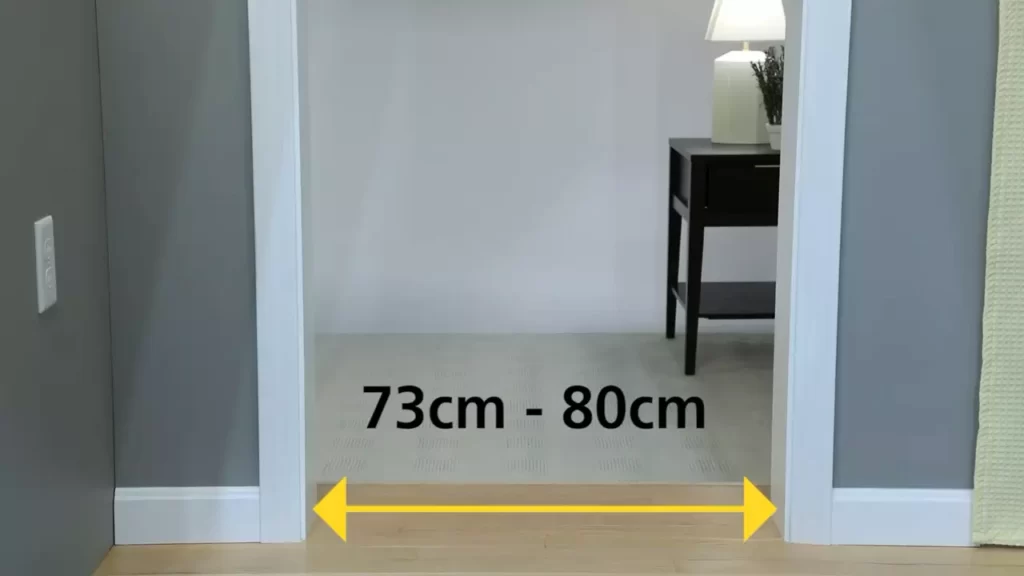
The Need for Baby Gate on Stairs
Installing a baby gate on stairs serves multiple purposes. It acts as a physical barrier, preventing young children from accessing areas with potential hazards. Staircases, with their steep inclines and hard surfaces, can pose a high risk of falls and injuries for babies and toddlers. By restricting access to the stairs, baby gates create a safe environment for exploration and play.
Factors to Consider before Installing a Baby Gate
Before installing a baby gate on stairs, it is crucial to consider a few factors to ensure both effectiveness and convenience.
- Gate Type: There are various types of baby gates available, such as pressure-mounted gates, hardware-mounted gates, and retractable gates. Each type has its own pros and cons, so choose one that suits your specific needs and the layout of your stairs.
- Size and Height: It is essential to select a gate that fits the width of your staircase. Measure the space accurately to ensure a snug fit. Additionally, consider the height of the gate to prevent climbing attempts by your little one.
- Construction and Durability: Look for a sturdy gate made from high-quality materials that can withstand the wear and tear of daily use. A gate with a solid construction will provide maximum safety for your child.
- Easy to Use: Consider the ease of installation and operation of the baby gate. You don’t want to struggle every time you need to pass through the gate yourself. Look for gates with simple mechanisms and one-handed operation.
- Gate Location: Determine where you plan to install the gate on the stairs. You may need to consider additional gates for both the top and bottom of the staircase to provide complete protection.
By taking these factors into account, you can ensure that the baby gate you choose is not only effective but also convenient and user-friendly for both you and your child.
Preparing For Baby Gate Installation
Installing a baby gate on your stairs is an essential step towards creating a safe environment for your little one. However, preparation is key to ensuring a successful and secure installation. In this section, we will guide you through the necessary steps to properly prepare for baby gate installation on your stairs. From assessing the staircase to selecting the right baby gate for your needs, we have got you covered.
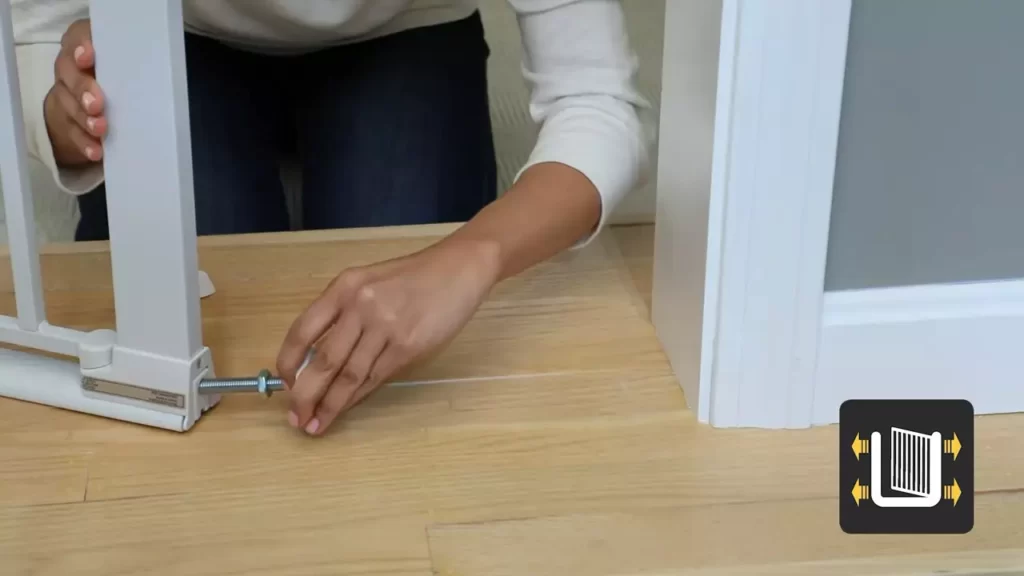
Assessing the Staircase for Installing a Baby Gate
Before plunging into installing a baby gate on your stairs, it is crucial to assess the staircase itself. Every staircase is unique, with varying dimensions, materials, and construction. By carefully assessing your staircase, you can identify key factors that will determine the type of baby gate that is safe and suitable for your needs.
To assess your staircase for baby gate installation, follow these steps:
- Measure the width of the staircase. Use a tape measure to determine the distance between the walls or banisters where the gate will be mounted. This measurement will help you choose a baby gate that fits securely in your staircase.
- Examine the material of your staircase. Is it made of wood, metal, or another material? This information will play a role in selecting the appropriate type of baby gate.
- Observe the layout of your staircase. Are there any irregularities such as curves, landings, or openings that may affect the installation process? Make note of these details as they will impact your choice of baby gate as well.
Choosing the Right Type of Baby Gate for Your Stairs
With the assessment of your staircase complete, it is time to select the right type of baby gate for your stairs. There are several different types of baby gates available, each designed to fit specific staircase configurations. By choosing the right type of baby gate, you can ensure a secure and effective installation.
Consider the following factors when choosing a baby gate:
- Pressure-mounted or hardware-mounted: Pressure-mounted gates are easy to install and do not require drilling, making them ideal for temporary use. On the other hand, hardware-mounted gates are more secure and suitable for long-term installation.
- Bottom of stairs or top of stairs: Different baby gates are designed specifically for the bottom or top of stairs. Ensure that you select the appropriate type for your desired location.
- Gate height: Take into account the height of the gate to ensure that it will effectively prevent your baby from climbing over.
Gathering the Necessary Tools and Materials
Once you have chosen the right type of baby gate for your stairs, it is important to gather all the necessary tools and materials for installation. This will ensure a smooth and efficient process, saving you time and frustration.
Here are the tools and materials you will likely need:
| Tools | Materials |
|---|---|
| Screwdriver | Baby gate |
| Electric drill | Mounting hardware (if required) |
| Tape measure | Wall protectors (if necessary) |
Ensure that you have all the specified tools and materials at hand before you begin the installation process. This will save you from unexpected delays and allow for a seamless installation.
By following these steps and properly preparing for the installation of a baby gate on your stairs, you can create a safe and secure environment for your little one. The next section will delve into the actual installation process, providing you with a step-by-step guide to successfully install your baby gate.
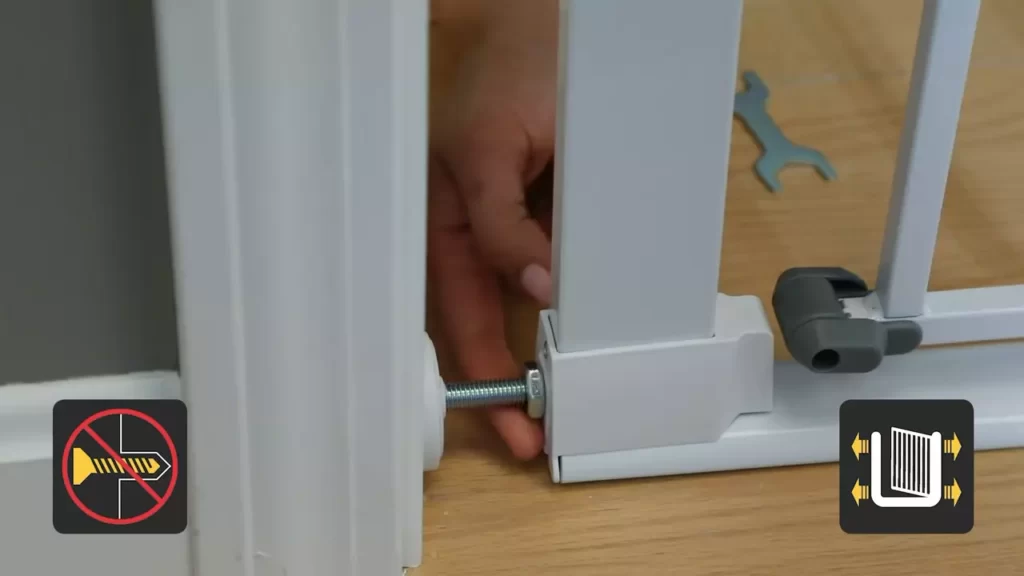
Installing A Hardware-Mounted Baby Gate On Stairs
Are you worried about your baby’s safety on the stairs? Installing a baby gate can provide peace of mind and prevent accidents. When it comes to securing your little one’s safety, a hardware-mounted baby gate is the best option for stairs. While pressure-mounted gates are suitable for doorways, they are not as secure on staircases. In this guide, we will walk you through the process of installing a hardware-mounted baby gate on stairs, step by step. Let’s get started!
Measuring and Marking the Placement for Mounting Brackets
To begin, take measurements of the area where you plan to install the baby gate. It’s important to measure the width and height of the staircase accurately. Use a tape measure to determine these dimensions. Once you have the measurements, mark the placement for the mounting brackets on both sides of the staircase. These brackets will provide the necessary support for the baby gate. Take note of any obstructions such as banisters or handrails that may require additional adjustments or brackets. Precision is key, so take your time to ensure the markings are accurate.
Attaching the Mounting Brackets to the Wall or Banister
Next, it’s time to attach the mounting brackets to either the wall or banister. If you’re attaching the brackets to a wall, use a stud finder to locate the studs for better stability. If you’re attaching the brackets to a banister, check if it’s sturdy enough to support the baby gate. In some cases, you may need to use additional hardware or support for the brackets, especially if the banister is not strong enough. Use a power drill to secure the brackets in place, following the manufacturer’s instructions. Double-check that the brackets are level and securely attached before proceeding to the next step.
Securing the Baby Gate to the Mounting Brackets
Once the brackets are securely attached, it’s time to secure the baby gate to the mounting brackets. Carefully slide the gate into the brackets on both sides of the staircase. Ensure that the gate is level and centered. Use the provided screws or bolts to secure the gate to the brackets. Tighten the screws or bolts until the gate is firmly in place, but be careful not to overtighten. Test the gate to make sure it opens and closes smoothly without any wobbling or loose connections.
[blockquote]Note: Always keep an eye on children near stairs, as no gate is a substitute for adult supervision. Regularly check and maintain the stability and effectiveness of the baby gate to ensure continued safety.[/blockquote]
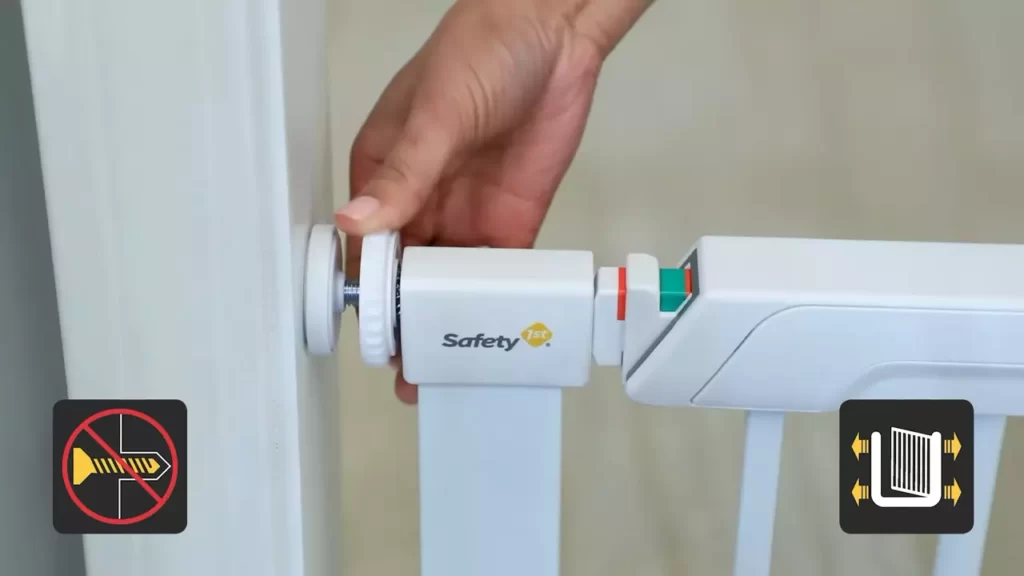
Installing A Pressure-Mounted Baby Gate On Stairs
When it comes to ensuring the safety of your little ones, installing a baby gate on stairs is crucial. Baby gates provide a secure barrier that prevents them from accessing potentially dangerous areas. In this blog post, we will guide you through the process of installing a pressure-mounted baby gate on stairs, step by step. So let’s dive right in!
Measuring and Adjusting the Gate for a Proper Fit
Before you start installing the baby gate, it’s important to measure the width of your staircase. This will ensure that you choose a gate that fits perfectly. Use a tape measure to measure the distance between the two walls or banisters where you intend to install the gate. Take note of the measurement and select a gate that matches the width. Most pressure-mounted gates are adjustable, allowing you to customize the fit.
Once you have chosen the right gate, it’s time to adjust it for a proper fit. Look for extensions that come with the gate if the width of your staircase exceeds the standard size. Attach the extensions according to the manufacturer’s instructions to achieve the desired width. Make sure the gate is securely adjusted to prevent any gaps or wobbling.
Applying the Pressure-Mounting Mechanism to Secure the Gate
Now that you have measured and adjusted the gate for a proper fit, it’s time to secure it using the pressure-mounting mechanism. This mechanism relies on pressure to hold the gate in place, without the need for drilling or permanently attaching it to the staircase.
To begin, position the gate in the desired location, ensuring that it aligns with the top and bottom of the staircase. Expand the gate until it fits snugly between the walls or banisters. The pressure pads on each side of the gate will create tension, keeping it securely in place.
Once the gate is in position, locate the adjusting knobs or handles on both sides. These are usually found near the top or bottom of the gate. Turn the knobs clockwise to increase the pressure and tighten the gate. Keep turning until you achieve a secure fit, ensuring that the gate does not shift or move when pressure is applied.
Double-check the stability of the gate by gently shaking or applying pressure to it. It should remain firmly in place without budging. If you notice any instability, readjust the gate to ensure a proper fit.
Now that you know how to install a pressure-mounted baby gate on stairs, you can create a safe environment for your little one. Remember to regularly inspect the gate for any signs of wear and tear, and always follow the manufacturer’s instructions for maintenance and usage guidelines.
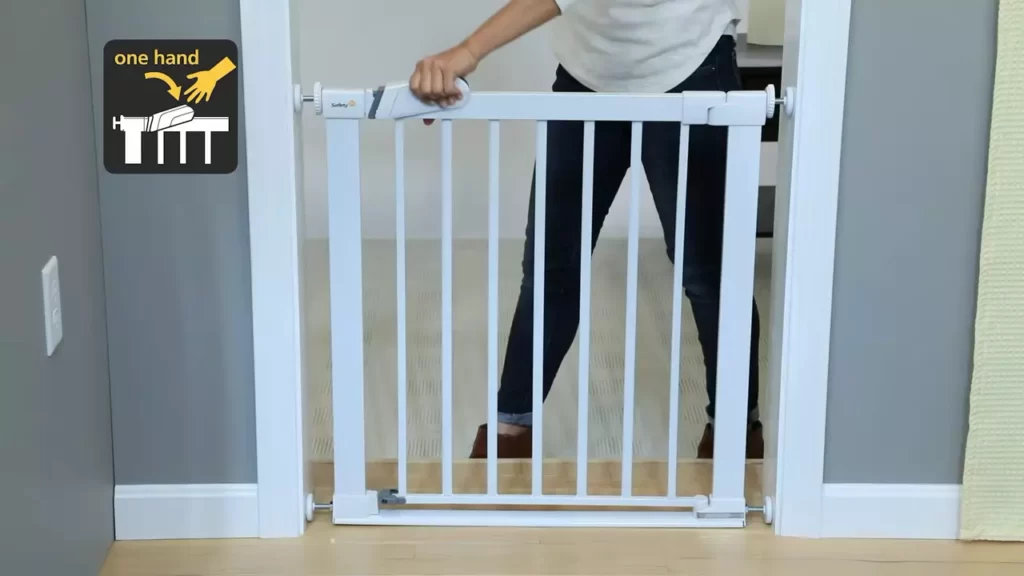
Additional Safety Measures For Baby Gate Installation
Once you have successfully installed a baby gate on your stairs, there are a few additional safety measures you can take to ensure the gate is secure and that your child understands its purpose and proper use. By following these guidelines, you can create a safer environment and minimize the risk of accidents.
Ensuring the Gate Has a Secure Latching Mechanism
The latching mechanism is a crucial component of any baby gate on stairs. It keeps the gate securely closed and prevents your little one from bypassing it. Regularly check the latching mechanism to ensure it is functioning properly. Make sure it latches securely and that there is no play or looseness in the mechanism.
If you notice any issues, such as a broken or misaligned latch, replace it immediately. The gate should be able to withstand the force of a toddler trying to open it. Additionally, make sure the latch is childproof, meaning your child cannot figure out how to open it. This will provide an extra layer of security.
Regularly Inspecting and Maintaining the Baby Gate
Keep in mind that a baby gate on stairs is not a set-it-and-forget-it installation. It requires regular inspection and maintenance to ensure its effectiveness and reliability. Inspect the gate regularly for any signs of wear and tear. Look for loose screws, cracked frames, or any other damage that may compromise its stability. If you notice any issues, repair or replace the gate immediately.
In addition to visual inspections, test the gate regularly to verify its durability. Place some pressure on it to ensure it remains secure. Remember that as your child grows, they will become stronger and more determined to explore beyond the gate. Therefore, it is essential to maintain the gate’s stability.
Teaching Children about the Purpose and Proper Use of the Baby Gate
A baby gate on stairs is only effective if your child understands its purpose and knows how to use it correctly. From an early age, educate your child about the gate’s importance and explain why it is there. Teach them that it is a safety measure to prevent them from accessing the stairs, which can be dangerous.
Show your child how to use the gate properly, demonstrating the opening and closing actions. Encourage them to use the gate independently whenever they approach the stairs. Reinforcing this habit will help them develop an understanding of the gate’s function and foster a sense of responsibility for their own safety.
By ensuring the gate has a secure latching mechanism, regularly inspecting and maintaining it, and teaching your child about its purpose and proper use, you can enhance the safety provided by a baby gate on stairs. These additional safety measures will give you peace of mind and create a safer environment for your little explorer.
Frequently Asked Questions For How To Install Baby Gate On Stairs
How Do You Install A Baby Safety Gate On Stairs?
To install a baby safety gate on stairs, follow these steps:
1. Measure the width of the stairs and choose a gate that fits securely.
2. Position the gate at the top or bottom of the stairs, ensuring it’s level.
3. Attach the gate to the wall or banister using the provided hardware.
4. Test the gate to ensure it’s properly secured and doesn’t have any loose parts.
5. Regularly check and maintain the gate to ensure continued safety.
Where Do You Put The Baby Gate On The Stairs?
Place the baby gate at the top and bottom of the stairs to prevent falls and accidents.
Why Not Install Baby Gate At Top Of Stairs?
Installing a baby gate at the top of stairs can be dangerous because it poses a falling hazard. Children can climb or push against the gate, causing it to become dislodged or giving them a false sense of security. It’s best to use gates specifically designed for stairs and install them at the bottom instead.
How Do You Attach A Baby Gate To A Banister Without Drilling?
Attach a baby gate to a banister without drilling by using zip ties or adjustable straps. Wrap them around the banister and the gate’s frame to secure them together. Another option is using a clamping baby gate that attaches without drilling.
Ensure it’s installed tightly and safely for your baby’s protection.
Conclusion
So, there you have it – a step-by-step guide on how to install a baby gate on stairs. By following these instructions, you can create a safe and secure environment for your little explorer. Remember to always prioritize your child’s safety and carefully select a gate that is suitable for your needs.
With a little time and effort, you can provide peace of mind and protection for your growing family. So, what are you waiting for? Start baby-proofing those stairs today!
